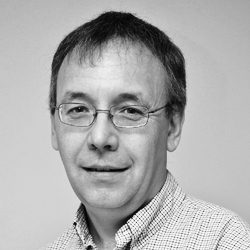Aviation Africa: What challenges are facing airport development?
For African aviation to meet its true potential the continent's airports will require massive investment in land, construction and technology. But how feasible is it for this investment to take place and what technological and services can change the whole passenger experience?

These are just two of the questions posed at a panel session on airport development on the first day of Aviation Africa.
Charles Asare, CEO, Ghana Airports, said its infrastructure is not designed for the growth figures it has in mind.
“Most flights come from Europe and they all arrive at the same time in the evening, which creates issues. We have a $25m project in hand to improve our infrastructure,” he said.
“We will have a five million passenger throughput with our new terminal.
“We have built new aprons and fuelling facilities, new car parks and airport city one is 70% completed. Tamale Airport is also having its runway extended,” Asare said.
“Basically we are trying to look at ways of getting good returns on our investment. We want to position ourself as being the preferred hub, offering more facilities at a more competitive price.”
Manny Kanabe added: “I am a big fan of the private/public partnership model, but Africa is different.
“We need more airports and there is an appetite for more private sector investment in airports. There has been a lot of investment from China, but African governments need to look at new ways to make airports look more attractive to investors.
“There is a big argument for a new framework,” Kanabe said.
SITA's Paul Murphy, said that passenger growth of six per cent for the region was encouraging and using technology to allow for the seamless transfer of passengers through airports was key.
“Common use and self service terminals with help the process, as will better baggage handling facilities,” Murphy said.
“But how do you invest in those facilities? We believe in a shared service. In the 104 airports we operate, there are plenty where there is a lot of manual processes in place.
“SITA, as a community player, can help the industry grow. Sometimes in Africa we have connectivity issues. We are rolling out facilities on the continent as fast we we can.
“There is also a skills shortage. As part of our CSR activity we are also introducing a new scheme to help develop the IT and technology people of the future.”
“SITA can bring airlines, airports and governments together, allowing for better border crossing tools too. With our air-to-ground communications we are also investing more in VHF communications tools in the region,” Murphy said.
Stewart Angus, DNATA, said that its presence in Africa is not what he would like.
“We have struggled to get our financial business cases to work,” Angus said.
“The nature of the aviation industry in Africa is that it is difficult for us to get the returns we would like in smaller airports.
“Dubai's experience of aviation being a great economic driver is something we wish to bring to the region. But there can be a lot of short-termism. You need to take a longer-term view,” Angus concluded.
Hassan El-Houry, CEO, National Aviation Services, Kuwait, said: “Our company is one of the fastest-growing airport services companies on the continent.
“Our challenge is to make sure that funding is getting to the right places, where it can have the most impact. We have seen a lot of projects that bring no real benefit.
“The whole passenger experience also needs to be improved. Seventy per-cent of investment in the region goes into airport construction, compared with 40% for the rest of the world.
“Investing more in catering, car parks and ground handling would make a big difference to the overall passenger experience.
“I also think that airports should be privatised – governments have no place in running them,” El-Houry said.
Manny Kanabe added that Africa must look at how more income can be generated from airport retail spaces.
Stay up to date
Subscribe to the free Times Aerospace newsletter and receive the latest content every week. We'll never share your email address.


